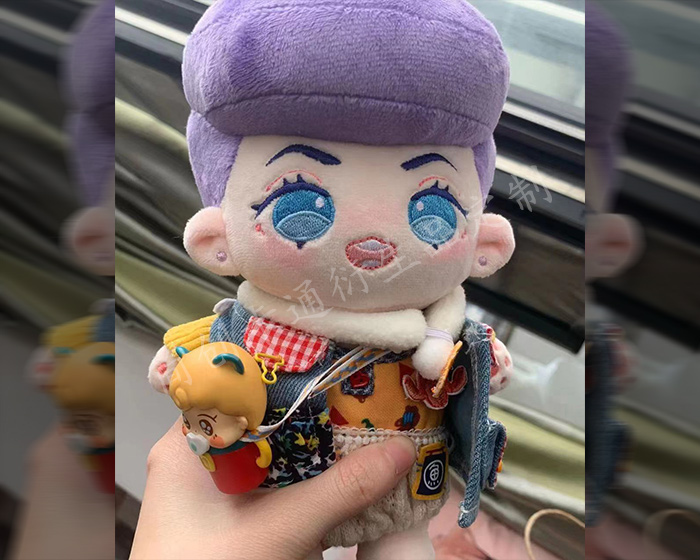stuffed animals often hold sentimental value, serving as cherished companions throughout childhood and beyond. When it comes time to store them long-term—whether for relocation, decluttering, or preserving memories—proper storage is crucial to maintaining their condition. Here’s a comprehensive guide on how to long-term store stuffed animals effectively.
1. Clean Before Storing
Before putting your stuffed animals into storage, a thorough cleaning is essential to prevent mold, odors, and pest infestations:
-
Washing: Check the care labels to determine whether the toys are machine washable or if they need hand washing. Use a gentle detergent to clean them, ensuring that any dirt or oils are removed.
-
Drying: Ensure the stuffed animals are completely dry before storage. Any moisture left can lead to mold growth. Air drying is often the safest option, but if using a dryer, opt for a low heat setting.
2. Use Appropriate Storage Containers
Choosing the right storage containers can significantly impact the longevity of your stuffed animals:
-
Airtight Bins: Use clear, airtight plastic bins to keep out dust and pests. These containers allow you to see the contents without having to open them frequently.
-
Vacuum-Sealed Bags: For a more space-efficient option, consider vacuum-sealing stuffed animals. This method compresses the toys, protecting them from dust and moisture while saving space.
3. Protect Against Pests
Pests can be a significant threat during long-term storage, so take preventative measures:
-
Natural Deterrents: Incorporate natural pest deterrents like cedar chips or sachets of dried lavender in your storage containers. These can help repel moths and other insects.
-
Regular Checks: Periodically inspect your storage area for signs of pests. Catching an infestation early can prevent damage to your stuffed animals.
4. Control Temperature and Humidity
Environmental factors play a crucial role in preserving stuffed animals:
-
Temperature: Store stuffed animals in a cool, dry place, away from direct sunlight, which can fade colors and degrade fabrics. Ideally, aim for a consistent temperature to avoid fluctuations that could affect the materials.
-
Humidity: Keep humidity levels low to prevent mold and mildew. Using a dehumidifier in storage areas can help maintain optimal conditions.
5. Organize Thoughtfully
Organizing your stuffed animals can make retrieval easier when you want to access them later:
-
Label Containers: Clearly label each container with its contents. This can save time when searching for specific toys and help you keep track of what you have stored.
-
Group by Size or Type: Consider organizing stuffed animals by size, type, or sentimental value. This will make it easier to find a specific toy when you need it.
6. Avoid Compression Damage
While vacuum-sealing can save space, be cautious about how you store especially delicate or vintage stuffed animals:
-
Avoid Overcrowding: Don’t pack containers too tightly. Allow enough space for the stuffed animals to maintain their shape. Overcrowding can lead to flattened forms and loss of fluffiness.
-
Support with Tissue Paper: For particularly delicate items, consider using acid-free tissue paper to help maintain their shape during storage. Stuffing the animals slightly can also help preserve their form.
7. Consider Climate Control
If you live in an area with extreme temperatures or humidity levels, you might want to consider climate-controlled storage options:
-
Indoor Storage: Keeping stuffed animals in a climate-controlled indoor environment is the safest option for long-term preservation.
-
Professional Storage: If you lack suitable space at home, consider using a professional storage facility that offers climate-controlled units to ensure your plush toys remain in excellent condition.
Conclusion
Long-term storage of stuffed animals requires careful planning and attention to detail. By cleaning them properly, using suitable containers, protecting against pests, controlling the environment, and organizing thoughtfully, you can ensure that your cherished plush companions remain in excellent condition for years to come. With these strategies in place, you can preserve the memories and comfort that these beloved toys provide.
The following are some examples of plush toys that our factory customizes for customers. Check out if there is one that you like best.
-
Custom Animal Plush
-
Cute Plush Doll
-
Custom Stuffed Animals
-
Plush Toy
-
Plush Dolls
-
Custom Stuffed Dolls
-
Custom Plush Toy
-
Cotton Dolls
-
Weighted Plush Toys
-
Cute Stuffed Animals
-
Custom Pet Stuffed Animal
-
Warmies Stuffed Animals
-
Weighted Stuffed Animal
-
Soft Toys
-
Plush Stuffed Doll
-
Custom Stuffed Dolls
-
Plush Maker
-
Bear Stuffed Toy
-
Anime Plush
-
Custom Stuffed Animal
-
Anime Plush
-
Custom Plush Toy
-
Personalised Stuffed Animal
-
Plush Animal Toys
-
Custom Plush Makers
-
Custom Plushies
-
Toy Manufacturer
-
Rag Doll Making
-
Custom Toys
-
Dog Plush Toys
-
Custom Rag Doll
-
Stuffed Animals
-
Custom Plush
-
Custom Plush Dolls
-
20cm Cotton Doll
-
Jojo Plush
-
Custom Doll
-
Jojo Doll
-
Large Plush Toys
-
15cm Cotton Doll
-
Dumpling Plush
-
Cotton Doll


























